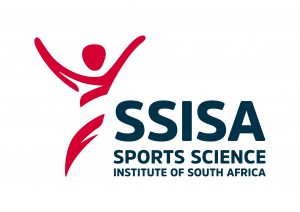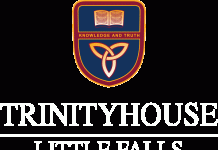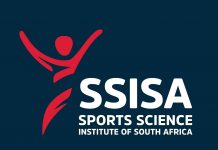The COVID-19 pandemic has had widespread consequences across diverse aspects of society. Other than the direct health consequences of those affected by the virus, peoples’ health has been challenged by associated movement and activity restrictions. Specifically, countries have imposed lockdown measures aimed at curbing movement and social interaction to help reduce the spread of the virus. People have at times been unable to perform exercise freely (other than at home), unable to attend recreational sporting facilities (e.g. gyms) and/or been unable to perform team-based sports. This has been particularly impactful in schools, since children went from performing various sporting activities on a daily basis to nothing being permitted and more recently limited involvement. It is only now that all school sports, including contact sports, are getting into full swing. However, given the relative inactivity faced by many school children during the pandemic, it is important to consider an appropriate re-introduction to full sporting activity.
The primary concern for school sport with the physical distancing and movement restrictions that have been in place is the maintenance of key physical qualities pertinent to the respective sports. Most school-based sports are technical, contact (e.g. rugby) and team-based and require frequent exposure and practice to maintain competency and safety of performance. For example, the repetitive exposure to fast accelerations, decelerations, quick changes of direction and high-speed running, as well as the game-specific tackling demands and decision-making skills required, have been rare during the pandemic owing to forbidden practices and match-play. As such, all children will have undergone a period of de-conditioning in relation to match-specific demands. A portion of children would have had access to gym facilities or home-based equipment, where they could have maintained resistance training or individual skill-based work, which would have helped them maintain their strength, power and cardiovascular fitness. However, many others would have completely stopped exercise or not engaged in activity relevant to their school sports. This means that children would be re-starting their sporting involvement from different levels of de-conditioning. Individual differences should be taken into consideration in programme design for children returning to practice and competition.
Acute and overuse sporting injuries are common in school sport. The former usually results from contact situations or erroneous cutting or landing maneouvres, whilst the latter is more related to excessive or inappropriate training loads. Undergoing a prolonged period of detraining or de-conditioning increases the risk of both types of injury. Firstly, acute injuries are more likely since children have not practiced match-specific skills and may have grown unfamiliar with contact situations. Their tissues have lost resilience in handling external forces and performing rapid accelerations, decelerations and changes of direction. Ramping up training and competition too quickly would thus pose a risk of injury to key structure involved in these maneuvers (e.g. ankles, knees and shoulders/neck in tackles). Overuse injuries such as stress fractures and tendinopathies also pose a concern given that children’s bones and soft tissues have likely undergone a prolonged period with inadequate stimulation. Their strength and resilience has deteriorated without frequent exposure to game-specific tasks and strength and conditioning. Ramping up their training now with the aim of quickly preparing them for school competition may put many children at risk of repetitive strain injuries (e.g. shoulders and lower backs in cricket players, Osgood Schlatters and Sever’s Disease as well as Achilles and Patella tendinopathies in running-based sports). Indeed, research has found that in soccer, soft tissue injuries are most common during the early phases of pre-season training following a prolonged period of rest or relative inactivity during the off-season break. Therefore, patience is needed in building back up soft tissue resilience gradually before imposing heavy training loads for performance.
In this light how do we go about returning school children to training and competition? In normal circumstances, children would be regularly exposed to sport and fitness activities. Their musculoskeletal, respiratory and cardiovascular systems are thus accustomed to high volume of training stimuli. The profound reduction / absence of stimulus during COVID would have caused significant de-conditioning of these areas. Research suggests that in returning players to sport after a period of relative rest, low and high sudden training loads both pose a greater injury risk than an intermediate progressive plan in which load is increased in parallel with players’ individual adaptation to their return to training. This includes all aspects of ‘strength and conditioning’ be it rehabilitation from prior injury, joint stability, strength, power and cardiovascular fitness training but also high-speed running, agility/cutting and collision exposure. Let’s unpack these individually.
Firstly, many children are likely to have had injuries or niggles at the time COVID arrived. On the positive front, the prolonged rest afforded by the pandemic likely allowed many of these to heal. However, prior injury is the strongest predictor of future injury. Therefore, practitioners working with school children would have ideally used this time during a lack or absence of competition to work on areas that were injured and/or that had contributed to injury with the aim of preventing the injury from re-occurring upon return to sport. In all school children returning to sport, injury prevention should be prioritized given the degree of de-conditioning that has likely taken place in key physical structures: skeletal muscle, bone and soft tissue (tendons and ligaments), making these structures and the key joints they serve to protect or stabilize the vulnerable.
Skeletal muscle is found to de-condition rapidly (< 1 week) as it is highly sensitive to changes in activity. Specifically, disuse decreases muscle protein synthesis and causes a gradual reduction in muscle mass. Muscle strength and power also declines rapidly, up to 1.5-2% daily in cases of extreme disuse, with larger muscle groups that are responsible for greater workload (e.g. quadriceps, glutes) experiencing the greatest atrophy. Bone demineralization also occurs rapidly, within one week of unloading, whilst ligaments and tendons are more resistant to short-term disuse. Within a month of detraining, however, tendons and ligaments do lose their strength and integrity which would compromise their role in joint stabilization as well as force absorption and recoil. It is therefore crucial that basic injury prevention work is incorporated to the initial strength and conditioning programme, focused on fundamental movement patterns, body awareness, muscle recruitment, joint alignment and stability.
Muscle strength and power are fundamental to performance in all sports. Following the deterioration in these traits over the course of the pandemic, they need to be developed adequately before returning to competition. The majority of adaptations in strength and power occur in the first few weeks of a new training cycle (4-6 weeks). These are mainly related to neural changes. However, detraining of strength and power would have been due to both reduced neural drive and muscle atrophy. Thus, in returning to resistance training the initial emphasis should be on hypertrophy and muscle endurance to build back muscle size and strength, whilst developing joint stability through necessary range of motion and soft tissue resilience. After the initial 4-6 week period, the focus should shift to more heavy strength and power development (depending on time available before the competitive season).
Other than school children who have been able to keep up with leisure endurance exercise (e.g. running, hiking, cycling, swimming), it is expected for most children to have lost cardiovascular fitness over this period. Indeed, maximal oxygen consumption (‘VO2max’) declines rapidly with inactivity with multiple accompanying changes at the lung, heart, vasculature and skeletal muscle e.g. reduced plasma volume, cardiac muscle mass, stroke volume, oxygen uptake, delivery and extraction at working muscles, impaired oxidative metabolism, increased heart rate and blood pressure. This means that children are likely to struggle with breathing, thermoregulation, recovery and overall work capacity during sessions that are ‘cardio’ intensive. Special care needs to be taken to ensure that fitness sessions are progressed gradually towards the typical intensity and volume expected in game situations and allow for individual variation in present fitness capacity.
Although some children would have been able to maintain the above physical traits by having access to gym equipment and/or having the individual drive/motivation and resources to train on their own, all children would have lacked exposure to the intricacies of their sports, including both physical and mental demands. For example, children who play rugby would have lacked exposure to having to change direction at speed, tackle, evade tacklers, run with ball in hand whilst looking for support, jump for the ball, scrum, maul etc. Each of these has a particular technique or skill aspect but all involve decision-making that can only be trained adequately in team situations and ideally in match-play. Gradual exposure to such situations should thus be provided before children to return to competition. Further, high-speed running is highly taxing on soft tissues and needs to be slowly progressed, in both intensity and volume. These high-speed exposures should mirror the efforts required during match-play e.g. acceleration, deceleration, maximal velocity and sprint endurance, and need to be considered amongst the other training modalities being re-introduced (e.g. avoid performing fatiguing lower body strength work on the same day as high-speed running). Agility and change of direction training must also be introduced gradually. These movements are often associated with injury (e.g. hamstrings, groin, ankles) and caution should be taken to progress the speed of running and sharpness of change of direction appropriately.
Lastly, specifically in the context of contact sports, the return to full contact tackling must be introduced conservatively. Being socially distanced for so long and with contact sport being the last to re-introduce, children would have lost conditioning for handling collision situations i.e. withstanding external forces/blows safely. The tackling skill and physical capacity therefore needs to be gradually developed again to prevent possible traumatic injury upon return to play. This would mean dedicated sessions on tackle/collision technique, mock exposures in training and sub-maximal exposures in within-team games as well as complimentary resistance training work (e.g. shoulder, neck, ankle, knee stability). In combination with progressive resistance training, progressive tackling training will help re-build the confidence and resilience needed for repetitive tackling exposures and minimize injury incidence in such sports.
Returning to sport after a period of rest or relative inactivity is always hard. This is true for all ages as the words ring true ‘Use it or Lose it’. Schools have been heavily affected by the pandemic with sporting calendars thrown out the window and students having to try stay fit outside of official school practices. Whilst the top performers are likely to have remained motivated, many children have likely deteriorated in fitness and overall functional capacity. Each school and sporting team within a school will have to assess the level of de-conditioning that has occurred, establish the fitness of each individual and design a progressive program to gradually build up students again to a level of fitness suitable for competition without risking injury or illness. Children may be expected to return ‘rusty’ at their sport-specific skills, and perhaps lack confidence in their present ability. Coaches and practitioners working with children will need to be patient, encouraging and incorporate lots of sport-specific skill-based work in combination with their strength and conditioning. Ultimately the aim should be to provide children with the best tools available to improve their own fitness and skills, minimize their risk of injury and allow them to have fun once again on the sports-field.
References:
- Stokes, K.A., Jones, B., Bennett, M et al. 2020. Returning to play after prolonged training restrictions in professional collision sports. Int J Sports Med. 41: 895-911.
- Dayton, J.D., Ford, K., Carroll, S.J., et al. 2021. The de-conditioning effect of the COVID-19 pandemic on unaffected healthy children. Pediatr Cardiol. 42(3): 554-559.
Article by:
David Leith
MSc Exercise Science
BSc (Hons) Biokinetics
BSc Chemistry and Biochemistry
Sports Science Institute of South Africa (SSISA)
Sports Performance Biokineticist





